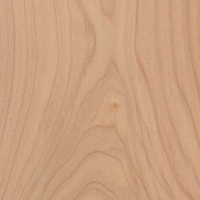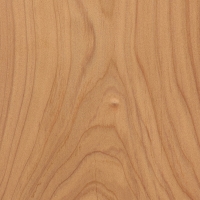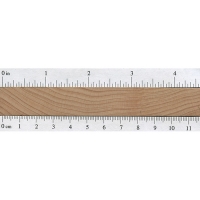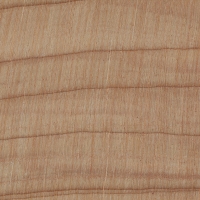 |
Common Name(s): Monterey Cypress Scientific Name: Cupressus macrocarpa Distribution: Endemic to central coast of California; cultivated throughout North America and Europe Tree Size: 50-82 ft (15-25 m) tall, 2-3 ft (.6-1 m) trunk diameter Average Dried Weight: 32 lbs/ft3 (515 kg/m3) Specific Gravity (Basic, 12% MC): .42, .51 Janka Hardness: 620 lbf (2,750 N) Modulus of Rupture: 11,770 lbf/in2 (81.2 MPa) Elastic Modulus: 1,133,000 lbf/in2 (7.81 GPa) Crushing Strength: 5,710 lbf/in2 (39.4 MPa) Shrinkage: Radial: 3.5%, Tangential: 6.3%, Volumetric: 8.5%, T/R Ratio: 1.8 |
Color/Appearance: Heartwood is a pale yellowish or reddish brown. Narrow sapwood is paler and usually clearly demarcated from the heartwood.
Grain/Texture: Grain is usually straight, though small knots are sometimes present, creating a more irregular grain pattern. Fine, uniform texture with a good natural luster.
Endgrain: Resin canals absent; earlywood to latewood transition gradual, color contrast low to medium; tracheid diameter small to medium; parenchyma diffuse.
Rot Resistance: Rated as moderately durable; mixed resistance to insect attack.
Workability: Overall easy to work with hand and machine tools, though areas around knots can be problematic. Reportedly difficult to steam bend. Glues, stains, and finishes well.
Odor: Most cypresses in the Cupressus genus have a distinct, fragrant scent.
Allergies/Toxicity: Although severe reactions are quite uncommon, Monterey Cypress has been reported to cause skin irritation. See the articles Wood Allergies and Toxicity and Wood Dust Safety for more information.
Pricing/Availability: Not commonly seen for sale, Monterey Cypress is occasionally harvested/available locally for utility purposes. Prices are likely to be high for a domestic softwood.
Sustainability: This wood species is not listed in the CITES Appendices, but is on the IUCN Red List. It is listed as vulnerable due to a restricted natural range. (However, the species has been widely cultivated outside its natural range, and the vulnerable status only applies to naturally-occurring trees within its natural range.)
Common Uses: Utility lumber, fence posts, musical instruments (flamenco guitars), furniture, boatbuilding, and turned objects.
Comments: Endemic to the coasts of Monterey county, California, this iconic tree has been cultivated all over the world, and many cultivars exist today, including Leyland Cypress—a cross between Monterey Cypress and Alaskan Yellow Cedar.
- Alaskan Yellow Cedar (Cupressus nootkatensis)
- Gowen Cypress (Cupressus goveniana)
- Leyland Cypress (Cupressus x leylandii)
- Mediterranean Cypress (Cupressus sempervirens)
- Mexican Cypress (Cupressus lusitanica)
None available.
Scans/Pictures: A special thanks to Ken Forden for providing the wood sample of this wood species.








I’m thinking of using Monterey crypress for laminating my keel on a 15′ rowing and sailing boat Delawere ducker.Do you think it would work?